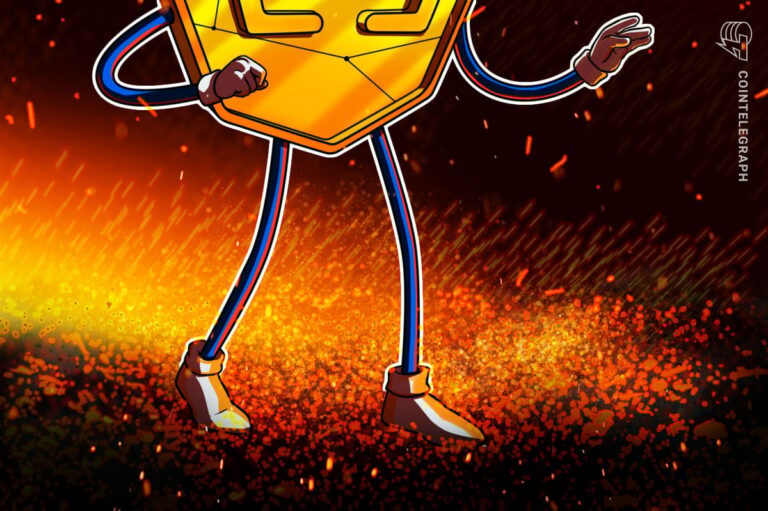
In 2021, it appeared as if 10 new Disneys — and the subsequent 20 Picassos — had been rising from blockchain and numerous nonfungible token (NFT) collections.
Exorbitant NFT values that yr signaled sturdy perception in lots of tasks. However two years later, these “subsequent Disneys” have delivered little. The scenario has created vital market frustration and disillusionment amongst buyers and lovers alike.
Challenge failures are sometimes attributed to founders. But, the greed, anxiousness and irrationality prevalent amongst Web3 contributors have additionally performed a considerable position within the ecosystem.
Associated: 3 theses that can drive Ethereum and Bitcoin within the subsequent bull market
We’re in a fancy atmosphere the place even essentially the most expert and visionary founders discover it difficult to navigate the market dynamics. This usually leaves a path of unfinished tasks and unfulfilled guarantees, additional eroding belief within the sector.
The detrimental influence of greed
Think about a celebration with tickets priced at $100. Somebody desirous to attend with associates misses the preliminary sale. Turning to the secondary market, they pay $500 for a ticket.
The probability of disappointment is high for the reason that occasion meant to supply a $100 expertise. With a $500 ticket, expectations are inevitably higher, which frequently means the expertise doesn’t match actuality.
Within the crypto market, this greed-induced frustration is clear. You possibly can pay 20 Ether (ETH) for an NFT that originally bought for 0.5 ETH, however it’s important to align your expectations with the 0.5 ETH value. (That’s very true contemplating how Web3 royalties have declined, a scenario that has additionally prevented founders from acquiring the advantages of high-value secondary gross sales.)
Inserting your psychological emphasis on the primary worth you see for an merchandise — as an alternative of taking the complete context into consideration — is named anchoring bias, the place preliminary info closely influences later choices and perceptions. Which means consumers view the high worth of NFTs they buy as an “anchor” for his or her expectations relating to utility, resulting in a cycle of disappointment.
Nervousness additionally creates an issue
Creating a high quality product takes time. However the market usually expects unrealistically fast progress.
That expectation places immense strain on builders and founders, who discover themselves in a cycle of continuous bulletins to fulfill the group’s want for fixed stimulation and progress.
Within the final cycle, massive gaming tasks provided one instance of this phenomenon. Some people believed that bold AAA video games — constructed on Unreal Engine 5 — can be delivered in mere months, though they sometimes require three to 5 years of growth.
They dumped their tokens after they realized it might take longer, as one yr appears like 10 while you’re hooked on volatility.
In some instances, opening the method of constructing to the general public is a blessing that Web3 has made potential. Nevertheless, it could additionally create a poisonous local weather that negatively impacts the mindset and well-being of mission founders.
The position of irrationality
Research have indicated that roughly 75% of venture-backed startups fail.
Like startups, NFT collections function in dangerous, experimental environments. But, the market usually overlooks the chance, as an alternative anticipating indefinite success and progress.
That is extremely pushed by affirmation bias, a psychological phenomenon that includes placing an emphasis on info that aligns with an individual’s current beliefs and preferences whereas ignoring contradictory proof.
Throughout the earlier bull run, this was epitomized by “WAGMI,” an acronym for “We’re all going to make it.”
However in a market pushed by shopping for and promoting, some contributors should lose to ensure that others to win.
That, sadly, means there is no such thing as a WAGMI — particularly in an atmosphere with low financial literacy and a number of anxiousness. This mixture might be notably harmful because it results in choices pushed extra by emotion than rational evaluation.
Associated: Historical past tells us we’re in for a powerful bull market with a tough touchdown
On the brilliant facet, the ecosystem has advanced lots since 2021. The great tasks that managed to adapt to market adjustments and the market context have gotten extra evident, and there has additionally been vital human maturation.
Many founders turned “CEOs” in a single day, which is analogous to altering a automobile’s tires whereas it’s transferring at 100 miles per hour — 24 hours per day, seven days per week. After nearly three years and a few pivots, many of those CEOs and groups are rather more mature, ready and centered on delivering one thing of value.
And whereas success relies upon largely on them, it additionally will depend on the maturity of the Web3 group. Good leaders won’t be sufficient to repair the sport if it’s damaged by extreme greed, anxiousness and irrationality. Buyers ought to take into account this — and attempt to enhance, financially and personally — as we enter the subsequent bull run.
Lugui Tillier is the chief industrial officer of Lumx Studios, a Web3 studio in Rio de Janeiro that counts BTG Pactual Financial institution, the most important funding financial institution in Latin America, amongst its buyers.
This text is for basic info functions and isn’t meant to be and shouldn’t be taken as authorized or funding recommendation. The views, ideas and opinions expressed listed below are the writer’s alone and don’t essentially mirror or characterize the views and opinions of Cointelegraph.